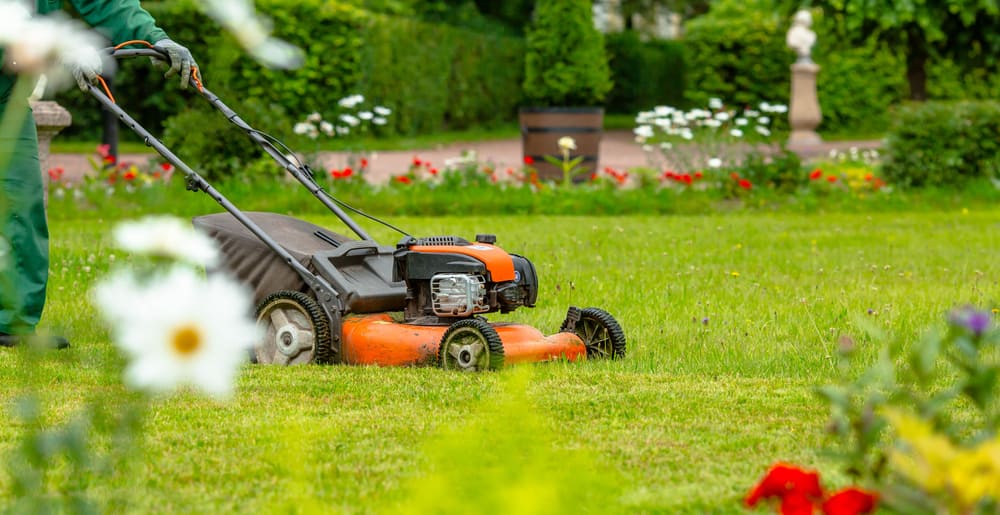
A lush, green lawn starts with proper mowing—but it’s one of the most misunderstood parts of lawn care. Cutting your grass too short, too often, or with dull blades can weaken your turf and invite weeds or disease.
Whether you handle mowing yourself or rely on a professional service, understanding lawn mowing and maintenance best practices will help your yard stay healthy, vibrant, and picture-perfect all year long.
1. Mowing Height Matters
Each type of grass thrives at a specific mowing height. Cutting too low stresses the plant and exposes the soil to weeds and heat. Cutting too high can make your lawn look uneven and patchy.
Here’s the ideal range for popular Texas grasses:
- Bermuda: 1.5–2 inches
- St. Augustine: 3–4 inches
- Zoysia: 2–3 inches
Following the one-third rule—never removing more than one-third of the blade height in a single mow—keeps your grass strong and reduces stress.
2. Keep Mower Blades Sharp
Dull mower blades tear grass instead of cutting it cleanly, leading to frayed, brown tips that dry out faster and make lawns look dull.
Sharpen your blades at least twice per season or more frequently if you mow often. Clean cuts promote faster recovery and healthier turf growth.
3. Mow Regularly (But Not Too Often)
Consistency is key. Mowing too infrequently causes overgrowth, forcing you to remove too much grass at once—which stresses the roots.
For most Texas lawns, mowing once every 5–7 days during the growing season works best. In cooler months, you can reduce the frequency as grass growth slows.
4. Alternate Your Mowing Pattern
If you mow in the same direction every time, your grass blades begin to lean one way and compact the soil underneath.
Switch up your mowing direction each time to encourage upright growth and reduce soil compaction. It’s a simple trick that makes a big visual difference.
5. Leave the Clippings (Yes, Really!)
Leaving short clippings on your lawn after mowing adds organic nutrients back into the soil—essentially acting as a natural fertilizer.
This practice, known as grasscycling, saves time, reduces waste, and improves soil health without increasing thatch.
6. Watch the Weather
Avoid mowing right after heavy rain—wet grass can clump, clog your mower, and tear easily. Likewise, mowing during extreme heat can shock the grass.
Aim for late morning or early evening when temperatures are moderate and grass is dry for the cleanest cut.
7. The Role of Professional Lawn Mowing Services
Professional lawn mowing isn’t just about convenience—it’s about precision. Experts like Anointed Lawn Care ensure every cut promotes healthy growth while maintaining a clean, even finish across your entire yard.
Their mowing services include:
- Proper mowing height based on your grass type.
- Regular scheduling for consistent health and appearance.
- Cleanup and edging for a manicured look.
- Integration with fertilization and weed control programs.
You’ll enjoy a flawless yard without worrying about timing, tools, or technique.
8. Complement Mowing With Complete Lawn Care
Mowing is just one piece of the puzzle. Combine it with:
- Fertilization for steady, nutrient-rich growth.
- Weed control to prevent competition.
- Aeration to keep roots oxygenated.
- Moisture management to retain hydration efficiently.
Together, these services create a strong, balanced lawn that thrives season after season.

Mowing might seem simple, but when done correctly, it’s the foundation of a beautiful lawn. With the right height, timing, and care techniques, your grass will stay thick, green, and resilient.
Get professional mowing and maintenance that brings out your lawn’s best—contact Anointed Lawn Care today to schedule your next service and get your free quote!









